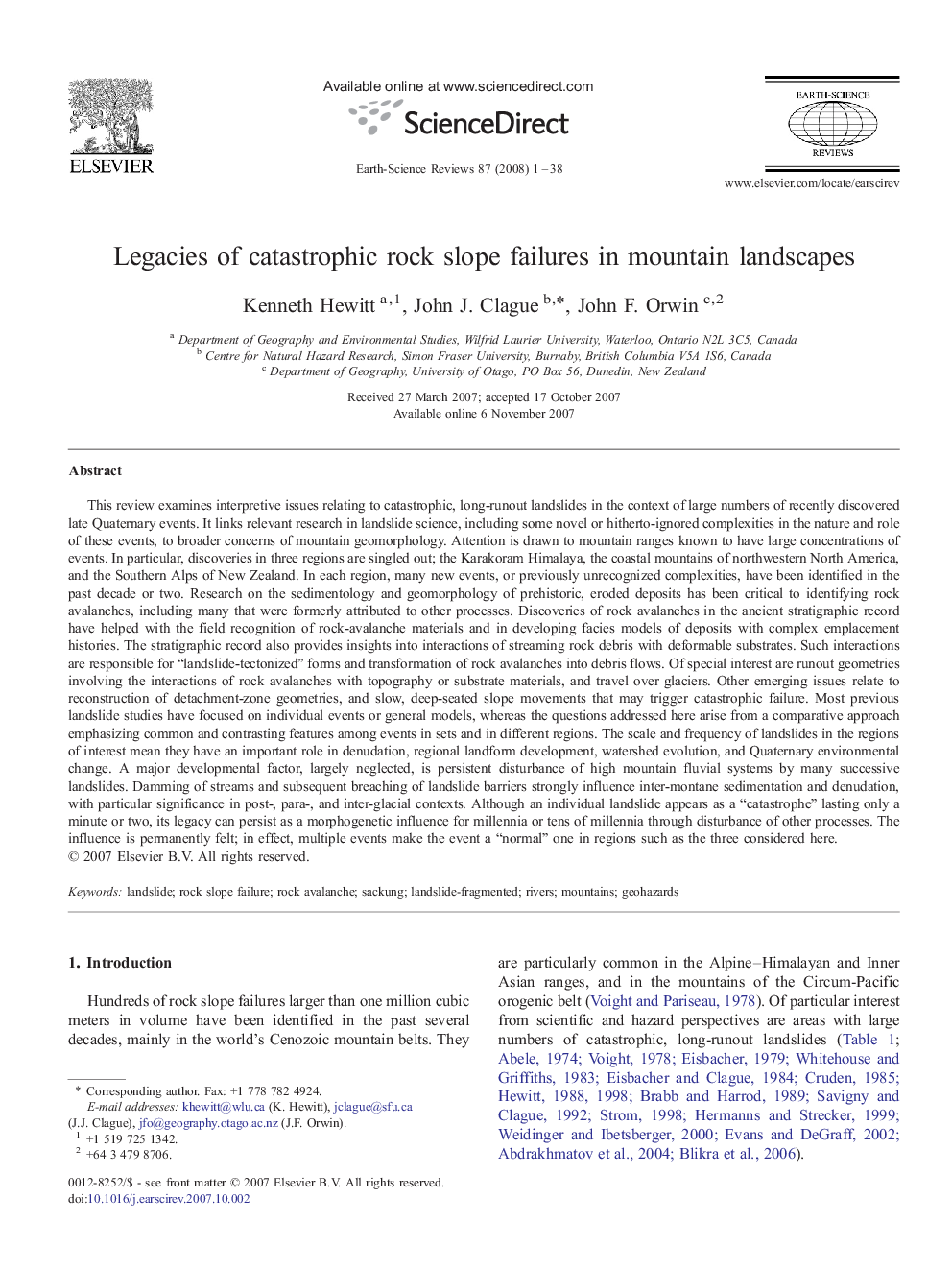| کد مقاله | کد نشریه | سال انتشار | مقاله انگلیسی | نسخه تمام متن |
|---|---|---|---|---|
| 4726420 | 1640036 | 2008 | 38 صفحه PDF | دانلود رایگان |

This review examines interpretive issues relating to catastrophic, long-runout landslides in the context of large numbers of recently discovered late Quaternary events. It links relevant research in landslide science, including some novel or hitherto-ignored complexities in the nature and role of these events, to broader concerns of mountain geomorphology. Attention is drawn to mountain ranges known to have large concentrations of events. In particular, discoveries in three regions are singled out; the Karakoram Himalaya, the coastal mountains of northwestern North America, and the Southern Alps of New Zealand. In each region, many new events, or previously unrecognized complexities, have been identified in the past decade or two. Research on the sedimentology and geomorphology of prehistoric, eroded deposits has been critical to identifying rock avalanches, including many that were formerly attributed to other processes. Discoveries of rock avalanches in the ancient stratigraphic record have helped with the field recognition of rock-avalanche materials and in developing facies models of deposits with complex emplacement histories. The stratigraphic record also provides insights into interactions of streaming rock debris with deformable substrates. Such interactions are responsible for “landslide-tectonized” forms and transformation of rock avalanches into debris flows. Of special interest are runout geometries involving the interactions of rock avalanches with topography or substrate materials, and travel over glaciers. Other emerging issues relate to reconstruction of detachment-zone geometries, and slow, deep-seated slope movements that may trigger catastrophic failure. Most previous landslide studies have focused on individual events or general models, whereas the questions addressed here arise from a comparative approach emphasizing common and contrasting features among events in sets and in different regions. The scale and frequency of landslides in the regions of interest mean they have an important role in denudation, regional landform development, watershed evolution, and Quaternary environmental change. A major developmental factor, largely neglected, is persistent disturbance of high mountain fluvial systems by many successive landslides. Damming of streams and subsequent breaching of landslide barriers strongly influence inter-montane sedimentation and denudation, with particular significance in post-, para-, and inter-glacial contexts. Although an individual landslide appears as a “catastrophe” lasting only a minute or two, its legacy can persist as a morphogenetic influence for millennia or tens of millennia through disturbance of other processes. The influence is permanently felt; in effect, multiple events make the event a “normal” one in regions such as the three considered here.
Journal: Earth-Science Reviews - Volume 87, Issues 1–2, February 2008, Pages 1–38